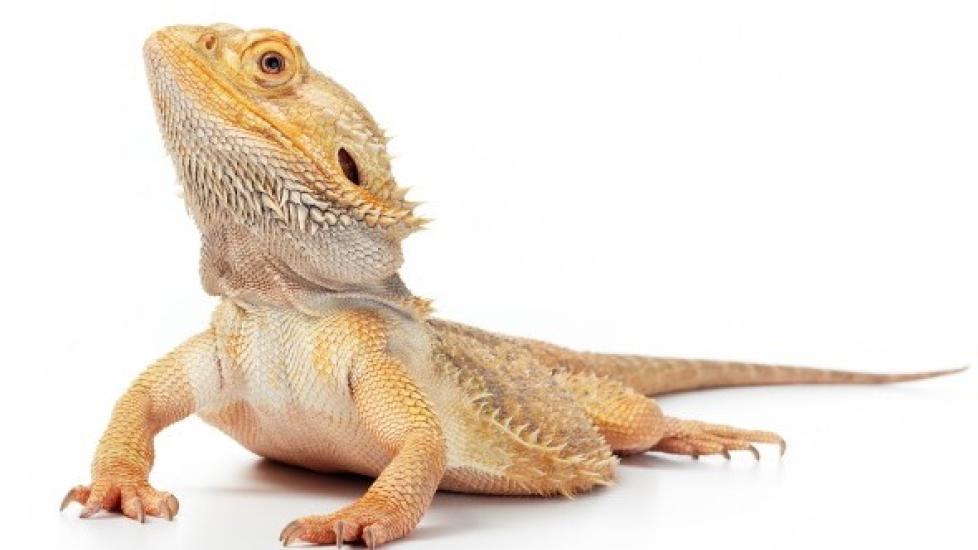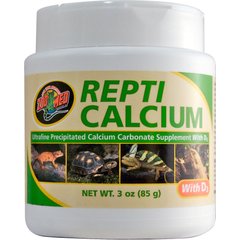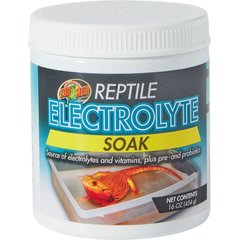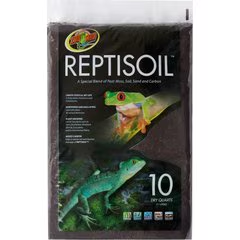The 5 Best Reptiles and Amphibians for Kids
By Dr. Laurie Hess, Dipl ABVP (Avian Practice)
Certain reptiles and amphibians can be terrific pets, but some of them can be complicated to keep, and not all of them are appropriate for children.
If you’re allergic to feathers or fur, or if you are looking for a pet that is fascinating to watch and requires little to no time out of its enclosure, these incredible reptiles and amphibians might make an excellent choice for you. With proper adult supervision, older children can learn to care for these animals and develop an appreciation for nature’s diversity.
Here are the five best reptiles and amphibians for families with kids:
Bearded Dragon Lizards
As lizards go, these animals are relatively simple to care for and easy to handle. These yellow/brown to orange or red-colored lizards get their name from their ability to expand the skin over their throats when they are upset or stressed. They can grow a foot to two feet long, nose to tail tip, and live on average between seven and ten years.
These lizards should be housed in glass tanks heated with over-the-tank lights so that the temperature in the basking zone (an area set up as if the pet were basking in the sun) is 90 to 105 degrees Fahrenheit and in the cool zone is in the mid-70s. They should be provided with branches or logs on which to climb, as well as a full-spectrum light with a UV-B/UV-A bulb to enable them synthesize vitamin D3 in their skin so that they can absorb calcium from their food. To keep hydrated and allow them to shed their skin properly, they should be misted daily with water, which they absorb through their skin. They should also be provided with a shallow bowl of water into which they can climb if they choose.
Bearded dragons should be fed live crickets and mealworms, frozen and thawed pinkie or fuzzy mice (dusted with supplemental calcium powder at least twice a week), plus a variety of chopped vegetables including collard greens, kale, spinach, romaine lettuce, mustard greens, squash, zucchini, sweet potato, peppers, and shredded carrots. They should also be given a multi-vitamin supplement sprinkled on their food twice a month. If handled often, bearded dragons can be quite docile and very interactive.
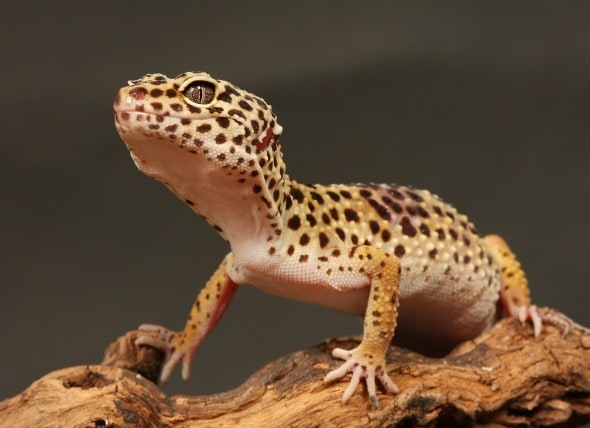
Leopard Geckos
These lizards get their name from their yellow skin that is initially covered with brown stripes that eventually fade to spots as they age. They grow up to about a foot long and live for between eight and ten years with proper care. These geckos live in glass tanks with rocks on which to climb and a shallow dish of water in which to soak. They should be given a moist hide box containing moss or vermiculite that is misted daily to provide humidity to facilitate normal shedding of skin. They should be provided with an over-the-tank heat bulb to maintain temperatures from 90 degrees Fahrenheit in the basking zone to the low 70s in the cool zone farthest from the bulb.
Despite their nocturnal behavior in the wild, leopard geckos living indoors also should be provided with a full-spectrum, UV-A/UV-B bulb to properly synthesize vitamin D3 and absorb calcium.
Leopard geckos should be fed live crickets every day to every other day, along with occasional live mealworms, wax worms, or other insects that are gut-loaded (fed a vitamin-enriched diet) before they are offered. Insects also should be dusted with calcium powder before feeding to the gecko. Larger geckos can be fed frozen and thawed pinkie mice. Easy to handle and generally very gentle, these lizards can be great first reptiles for families.
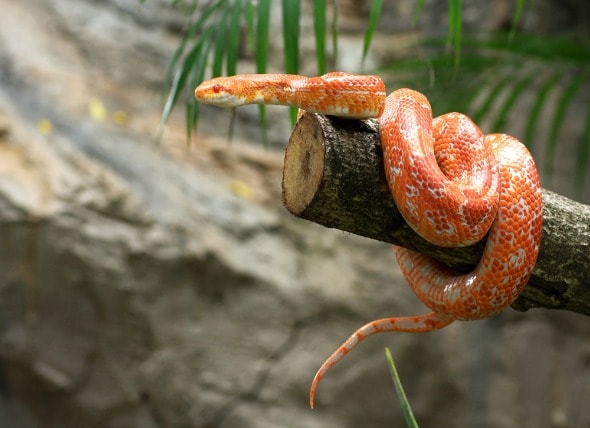
Corn Snakes
These orange- to red-brown snakes make great pets for families because they are amenable to handling and can live into their twenties with proper care. They are large enough to not be too fragile, yet not too large to be intimidating. While they can grow between four and six feet long, they are typically easier to handle than many boas and pythons, as they do not develop as wide a girth as these other snakes.
These snakes should be housed alone in glass aquariums with escape-proof lids, at least one hide box (such as a hollow log or piece of PVC pipe) to make them feel secure, and tree branches for climbing. They should be provided with an over-the-tank heat bulb to provide a warm zone of 85 degrees Fahrenheit and a cool zone in the low 70s. Damp sphagnum moss or paper towel that is regularly misted and changed to prevent mold development should be provided to ensure adequate humidity for proper shedding.
Although snakes ingest calcium when they eat the bones of whole prey, they generally fare better when provided with a full spectrum UVB/UVA light a few hours a day to ensure they are experiencing day and night and seasonal cycles. Paper-based bedding, such as shredded paper or commercially manufactured compressed recycled paper pellets, are ideal rather than wood shavings or walnut shells, as paper is digestible if eaten, while ingested wood or walnut shells can lead to gastrointestinal obstruction. Sand should never be used as bedding as it, too, can lead to intestinal impaction if ingested.
Corn snakes should be fed freshly killed or frozen and thawed rodents. Live prey should never be offered, as they can bite the snake and can lead to fatal infection in your pet. Young snakes can be fed small mice, while adults may be fed larger mice or small rats. Baby corn snakes should be fed every five to seven days, while adults should be fed every seven to ten days. Water should be available in a shallow, untippable bowl big enough to soak in. Corn snakes are best handled two to three days after feeding, after they have started digesting their meal and not before they are hungry again, as hungry snakes can be cranky and more apt to bite. With gentle restraint, these snakes can become quite tame and readily respond to their owners touch.
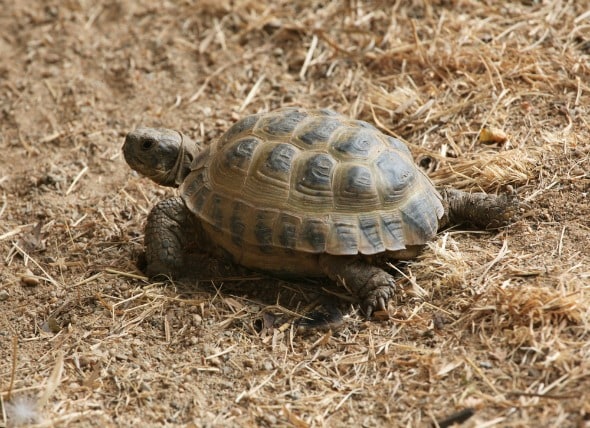
Russian Tortoises
These tortoises (that live on land, as opposed to turtles that live in water) are active and typically love to eat. They also remain small, growing no bigger than eight to ten inches long, with females being slightly larger than males. With proper care, they can live more than 40 years. Ideally, these heat-loving reptiles are housed outside in warm climates; however, in more temperate zones, they can be housed in well-ventilated glass tanks with screen tops or large plastic bins with ventilated tops. Enclosures with opaque (rather than clear) sides sometimes discourage tortoises from pacing and bumping into the tank walls. Heat can be provided by standard heat bulbs, infrared (red) heat bulbs, or ceramic heat emitters to maintain the basking temperature between 95 and 100 degrees Fahrenheit and the rest of the enclosure no lower than the low 80s. Full spectrum bulbs providing UVB light are essential for these reptiles to synthesize vitamin D3 and subsequently to properly metabolism dietary calcium.
Russian tortoises love to dig and burrow, so they must be given deep substrate, such as recycled paper pelleted products or shredded paper. Other substrates, such as rabbit pellets or cypress mulch, may be used if they are changed frequently to prevent mold growth. A hide box such as an upside down half log or wooden box can provide shelter and security.
These animals are desert species that tend not to consume much water. They should be soaked a couple of times a week in shallow warm water to keep them hydrated, and they should have access to a shallow pan of clean water from which to drink if they choose.
Russian tortoises are herbivores that eat a variety of dark, leafy, greens including Romaine lettuce, collards, carrot tops, kale, mustard greens and beet greens, plus smaller amounts of carrots, squash, and bell peppers. Small amounts of fruit, such as apple, bananas, pears and berries, can be fed occasionally as treats but should not make up more than 10 percent of the diet.
Commercial tortoise diets are also available that can be used in conjunction with vegetables and fruit. Fresh grass and hay also may be offered. The goal is to provide as much variety as possible in the diet. Food should be lightly sprinkled with calcium powder every other day and with calcium powder containing vitamin D on the days in between. A multi-vitamin should be dusted on the food twice a month, as well. In general, as long as their feet are kept in contact with a solid surface, these gentle reptiles enjoy handling and are very calm pets.
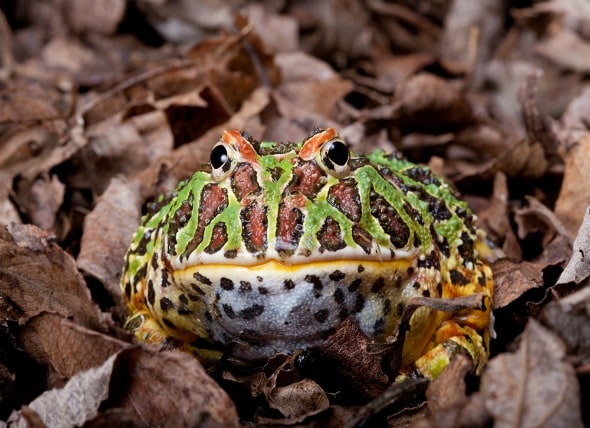
Pacman Frogs
In general, amphibians are typically harder to care for than most reptiles, so most amphibians are not ideal for families with children. However, Pacman frogs can make great pets when maintained properly. These South American amphibians, also called Argentine or ornate horned frogs, come in a variety of colors (yellow, green, orange and brown) and patterns (striped and spotted) and grow from the size of a quarter into between two and a half-and four-inch-long males and four to eight-inch-long females after one and a half years. With proper care, these frogs can live up to 15 years.
Pacman frogs should be housed individually in 10 to 20-gallon plastic or glass tanks with screen lids and damp substrate (leaf litter or sphagnum moss), as well as hiding spots such as behind live plants. These frogs love to burrow, leaving only their eyes exposed above ground; thus, tank substrate should be deep. A shallow water dish also may be provided for them to soak in but should be changed daily so as not to become soiled.
Tank temperature should be maintained between 72 to 85 degrees Fahrenheit. These frogs may dry out and dehydrate when overheated, so if a heating element is necessary to maintain tank temperature, an under-tank heating pad or a red or purple, low wattage nocturnal bulb is best. Daily misting and provision of damp (but not wet) bedding helps them stay hydrated. Provision of UV light for this species is controversial, as these frogs in the wild typically bury under leaves in the forest floor. However, if the tank is taller than six inches, a compact 5.0 fluorescent bulb is recommended to help with vitamin D formation and calcium metabolism.
Pacman frogs love to eat and will overeat if given the opportunity. In general, they mainly eat crickets and roaches, but they can also eat live mealworms, waxworms, silk worms, earthworms, feeder fish, and even frozen and thawed tiny mice, live caterpillars, grasshoppers, and snails. Food should be sprinkled with calcium powder supplemented with vitamin D3 and a multi-vitamin should be dusted on food once a week. Very large adult Pacman frogs should not be fed daily or they become obese.
As amphibians, Pacman frogs have thin, fragile skin that dries out quickly and damages easily if they are handled roughly. They also absorb toxins and germs through their skin, so they should be handled as little as possible, and when they are handled, they should be touched only with moistened gloves and not bare skin.
Regardless of species, all reptiles and amphibians can potentially carry Salmonella bacteria, so these pets are not meant for very young children who might handle them and then put their hands in their mouths. All children should be supervised when caring for reptiles and amphibians, and families should be sure to do thorough research regarding a reptile’s or amphibian’s care requirements before bringing one into their home.
